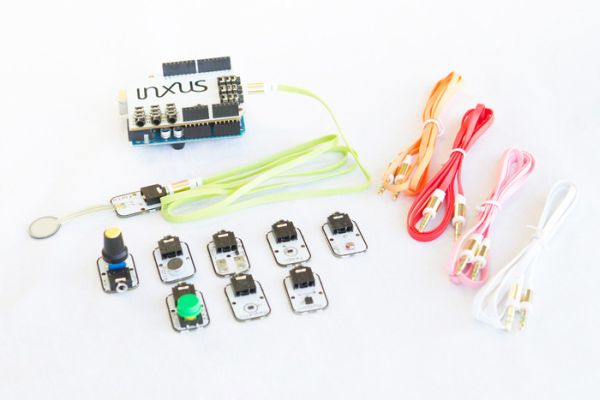Get straight to the action. Connect sensors to your Arduino in literally 2 seconds.
$35,000 Stretch Goal: On-board sensor tester
If we hit this goal, we will include on-board LEDs that can be controlled from your Arduino board using your PWM/IO pins. This will let you quickly see how each sensor responds (ie. more you press a pressure sensor the brighter the light). Think of it as an incredibly easy way to get started with programming your Arduino and/or testing your sensors.
What’s in the Shield?
The EasyPlug shield provides an incredibly simple, clean, and quick way to connect sensors to your Arduino board. We have sensors for just about anything.
Features:
- 6 analog sensor inputs.
- Compatible with evergrowing list of VERVE sensors
- Sensors are optimized for performance
- Sensor circuit protection
- No extra code to learn. Uses standard “analogRead(pin#)” command that most users are familiar with.
- Uses any 3.5mm stereo cable, but we have found great flexible and colorful cables.
- Sensors boards have mounting holes
- 6 unique colored cables so sensors are not confused
- Stackable with other shields
- No soldering
Meet the Sensors
All of our sensors are designed to be easy to use, right out of the box. Plug in a cable (provided) and the sensor is ready to go. We’ve picked the most useful and fun sensors for you. But we’re adding more all the time, so you should be able to find a sensor to fit your needs
Last but not least is the DIY sensor. This sensor is meant for people who already have some background in electronics and want an easy way to connect their sensors to an Arduino. The DIY sensor contains 0.1” spacing GND, signal, and 3.3V pins. It also has on-board pull-up and pull-down breakout pins that accept through-hole resistors. If you need more room or have more complicated analog sensors, you can plug the DIY sensor into your breakout bread.
For more detail: EasyPlug: The Sensor Shield for Arduinos

